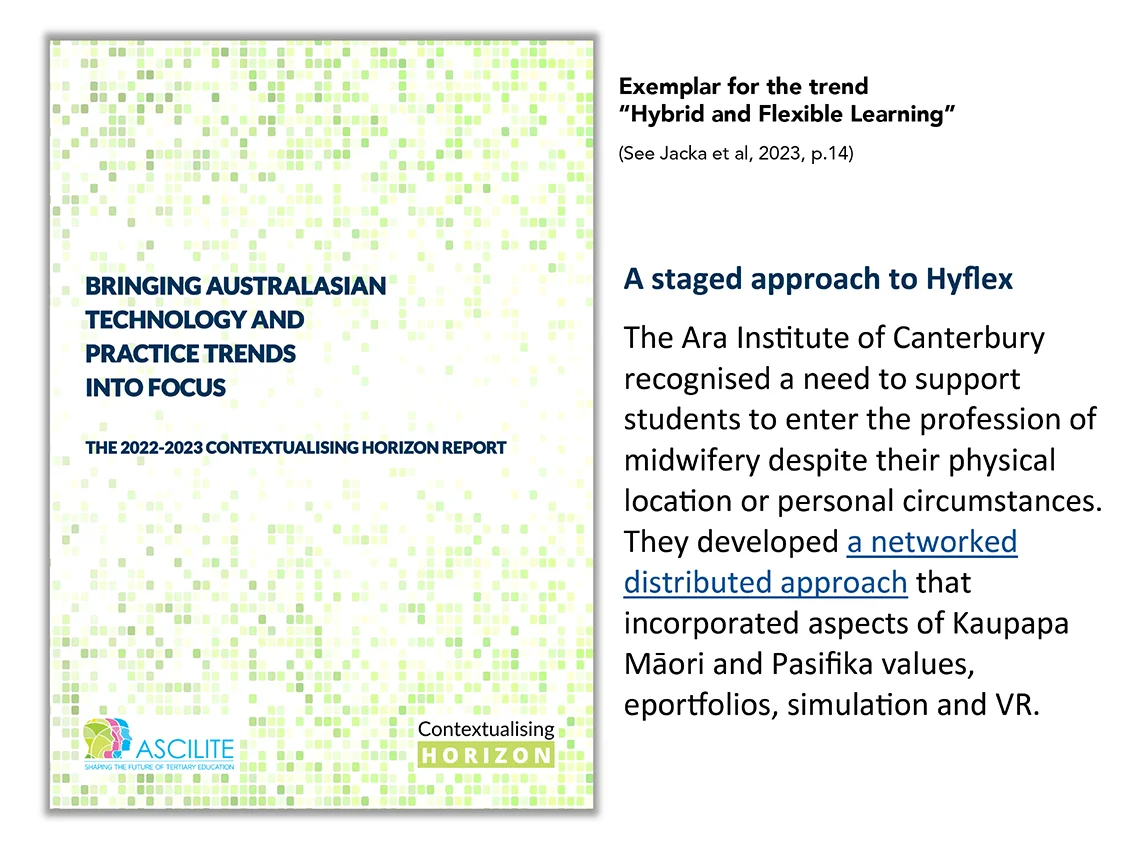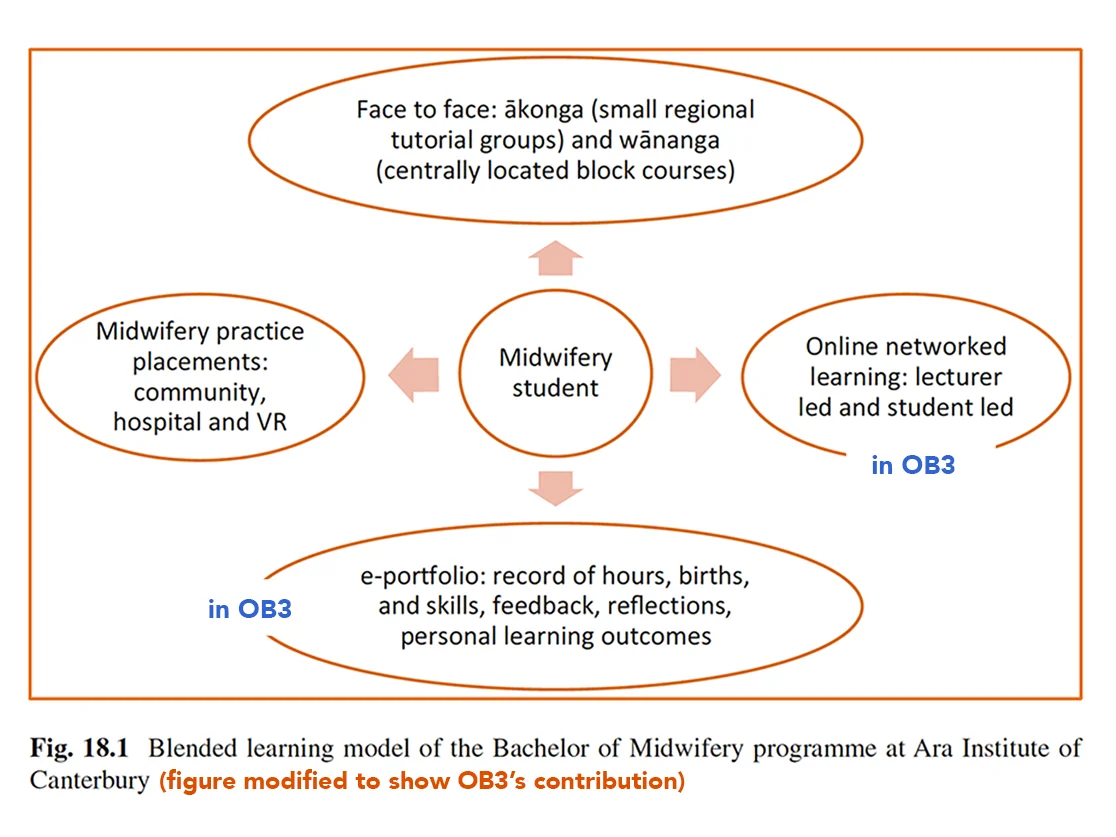Supporting Rural and Remote Students with Hybrid and Flexible Learning
The Bachelor of Midwifery at Ara Institute underwent a massive change from face-to-face to blended learning in 2009. The change was driven by issues relating to access and equity particularly for students living in rural areas or from outside main centres to be able to study Midwifery, so they did not have to uproot their families/whanau by having to travel to urban centres to study, with the potential consequence that they may not return to their home location.

